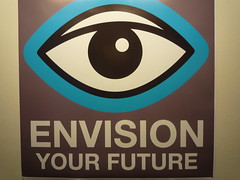 We live in an individualistic era. A mere hundred years ago, when our grandparents were youths, most people didn’t have access to the perfect music to match their personality and mood. They couldn’t pull up any newspaper in the world within seconds, as we can online. In this way, the 20th century saw a tremendous shift toward individualization. Technological innovations have brought a world of information and entertainment to our fingertips. And yet, most firms’ marketing strategies have not kept pace with modern technological capabilities. A few online retailers, such as Amazon, are indeed altering product offerings, sales, and even website appearance according to the individual consumer’s preferences and purchasing history. But this sort of approach is hard to find offline.
We live in an individualistic era. A mere hundred years ago, when our grandparents were youths, most people didn’t have access to the perfect music to match their personality and mood. They couldn’t pull up any newspaper in the world within seconds, as we can online. In this way, the 20th century saw a tremendous shift toward individualization. Technological innovations have brought a world of information and entertainment to our fingertips. And yet, most firms’ marketing strategies have not kept pace with modern technological capabilities. A few online retailers, such as Amazon, are indeed altering product offerings, sales, and even website appearance according to the individual consumer’s preferences and purchasing history. But this sort of approach is hard to find offline.
Don Pepper and Martha Rogers predicted this plateau seventeen years ago in their highly influential book The One to One Future. As Hot Socket founder Dev Bhatia wrote in his 2001 article titled Beyond the One to One Future, “Newly minted web marketers took the book [The One to One Future] as their mantra by the time it went into paperback in 1997.”
The basic idea behind this book is that the seismic technological landscape requires marketers to shift from economies of scale (selling a limited number of products to as many consumers as possible) to economies of scope (selling a broad swath of products to a niche group of loyal, keen customers).
In his article, Bhatia argues that this shift toward marketing individualization isn’t enough for true achievement. Instead, he says, marketers should also integrate well-established marketing theories, such as the importance of analyzing across-the-board consumer data. Based partially on Bhatia’s thoughts, and partially on our own beliefs regarding successful marketing, here are three things companies can do to customize customer service, as Pepper and Rogers envisioned nearly two decades ago:
1. Gather, analyze, and act on comprehensive customer data.
As Bhatia points out, if you only focus on one customer, you won’t see the trends within your whole customer base. Without a broad base of basic market research, your efforts at the individual customer level will have no foundation. See the forest first; then focus on individual trees.
PeopleMetrics’ approach: We conduct surveys to capture relevant feedback on the customer’s purchasing experience so you can identify trends but also take action at the individual level. This is our Customer Engagement Management approach.
2. Learn through each sale or interaction.
Consistently capturing sales and interaction data will distinguish the firms of the future. As Bhatia writes, companies must “Learn through each and every sale what about them drives consumer response.” We now have the technological ability to net, store, and analyze mountains of data—start reaching your firm’s peak performance by taking advantage of every opportunity for feedback.
PeopleMetrics’ approach: We work with our clients to understand the key customer touchpoints and use our Engagement Management Solutions to collect feedback about these interactions. This approach works for a wide variety of businesses, ranging from restaurants to accounting firms to pharmaceutical companies. In addition to Customer Engagement Management, we offer a Physician Engagement Management program designed specifically to maximize pharmaceutical sales force effectiveness.
3. Respond to important interactions.
Not every customer is created equal, at least not from your company’s perspective. As Pepper and Rogers proselytized, some customers are more loyal than others. If you keep those uber-loyal customers happy, they will return to buy more and more. And the best part is that you won’t have to spend a bundle on advertising to reach these folks. Keeping existing customers is much easier and much more thrifty than attracting new ones.
To immediately resolve any issues your highly engaged customers face, you must develop mechanisms for capturing, responding to, and learning from your best customers’ (or most important employees’ or target physicians’) experiences. As Bahia puts it, “Each time a consumer transacts (or doesn’t transact) with you, there’s something to be learned, and if you can’t use that knowledge to your advantage in real time, you lose out on a tremendous opportunity.”
~Monica Nolan, Account Manager
Want more? Click here to learn more about our solutions. You can also download our strategy map to see how you can turn your customer experience strategy into action.
Topic: Customer Experience





%20(1).png)